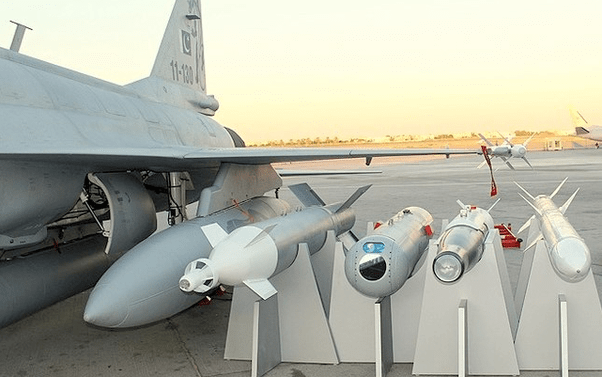PAK SCAN: Why IAF Shouldn’t Underestimate The PAF JF-17 Thunder Fighter Jet

A complete analysis of how Pakistan's JF-17 Thunder fends off against India's air arsenal and other state of the art fighter jets
Much like the Indian MiG-21 Bison, an upgraded variant of the venerated design which according to Indian reports was highly successful against a Pakistani F-16 – likely due to its high end avionics, electronic warfare, jamming and missile systems which are all of the fourth generation, the JF-17 has long been underestimated for a number of reasons.
The airframe is loosely based on that of the MiG-21 – an evolution of the Chinese J-7 design – but is considerably more capable than that of any other variant or derivative.
The fighter’s engines produce little over half the thrust of the Indian Air Force’s MiG-29 – one third that of the elite Su-30MKI – giving it an inferior thrust/weight ratio when fully armed. These are compensated for by a number of factors, including its access to state of the art sensors and munitions – including the Chinese PL-12 long-range air to air missile – an analogue to the American AIM-120C – and the YJ-12 anti-ship cruise missile. The latter makes the aircraft a potentially highly lethal ship hunter, in some ways comparable to India’s BrahMos cruise missile, and its deployment is an effective asymmetric asset against the large Indian surface fleet.

The JF-17 is relatively simple both to operate and maintain, far more so that the F-16 or MiG-29, and the costs of doing so are also extremely low.
While the aircraft is slower and less manoeuvrable than the F-16, it compensates with a higher altitude and arguably far superior options for its weapons load-out. Block II variants deploy data links and high-end electronic capabilities which early F-16 and MiG-29 variants both lacked, while their avionics are also considerably more sophisticated.
The fighters’ NRIET KLJ-7 X band fire control radars are also highly capable – variants of the Chengdu J-10’s formidable KLJ-10 – and are capable of tracking up to ten targets at ranges of over 105 km.
Data links allow the aircraft to potentially make use of longer-ranged munitions, particularly when operating alongside AWACS platforms capable of guiding missiles beyond the range of the fighters’ on-board radars.
As a key strength of the JF-17 is its compatibility with high-end Chinese munitions, it is highly possible that Block II variants could in future receive longer-range munitions which would benefit from such guidance – with more advanced variants of the PL-12 reportedly also planned for deployment by the upcoming JF-17 Block III.
Ultimately the JF-17 remains a highly capable fourth-generation fighter – more than a match for India’s MiG-21 and Mirage 2000 single-engine light fighters and potentially capable of posing a threat to medium weight platforms such as the MiG-29 and Rafale – though likely still struggling against the Su-30MKI.
The design is set to be enhanced considerably in the near future with the induction of the Block III variant, which will reportedly deploy a new radar, an infrared search, and tracking system (IRST), helmet-mounted display, new electronic warfare, and jamming systems, and potentially even PL-15 air to air missiles – which considerably out range anything currently in the Indian arsenal.



No comments:
Post a Comment